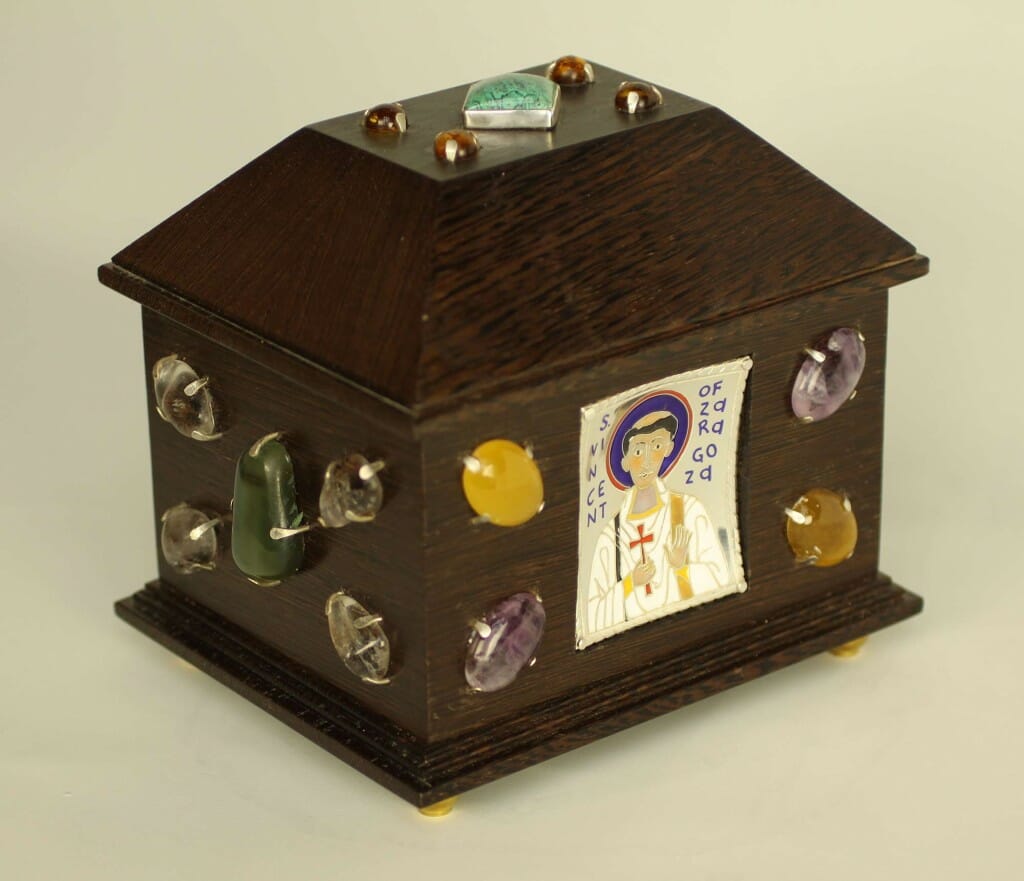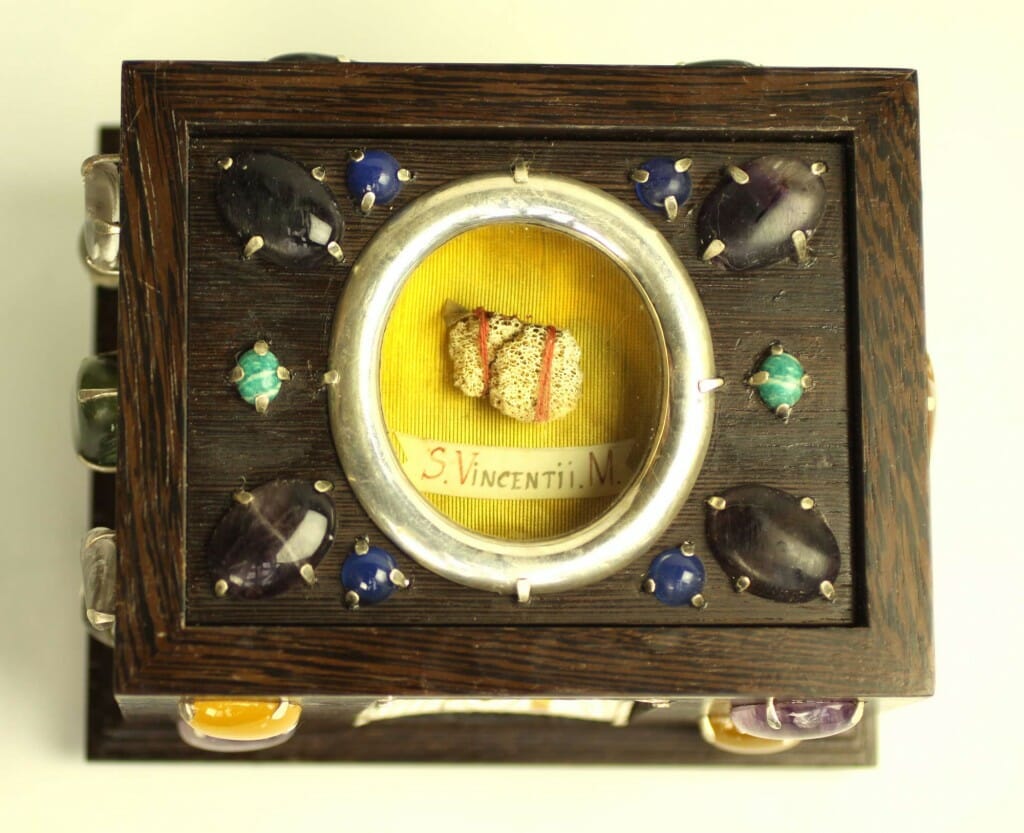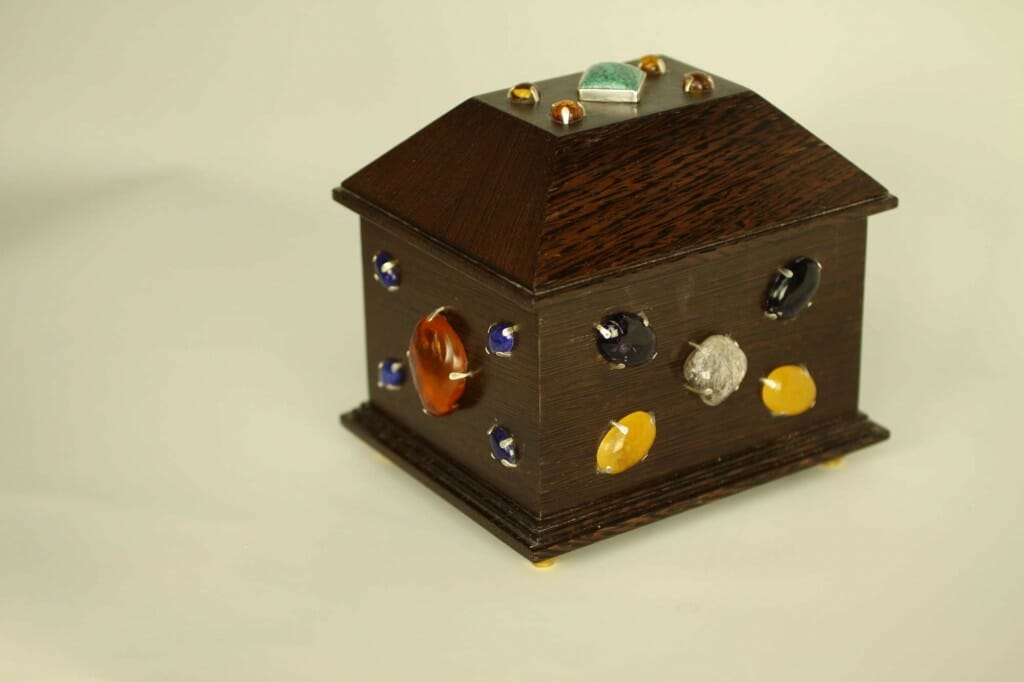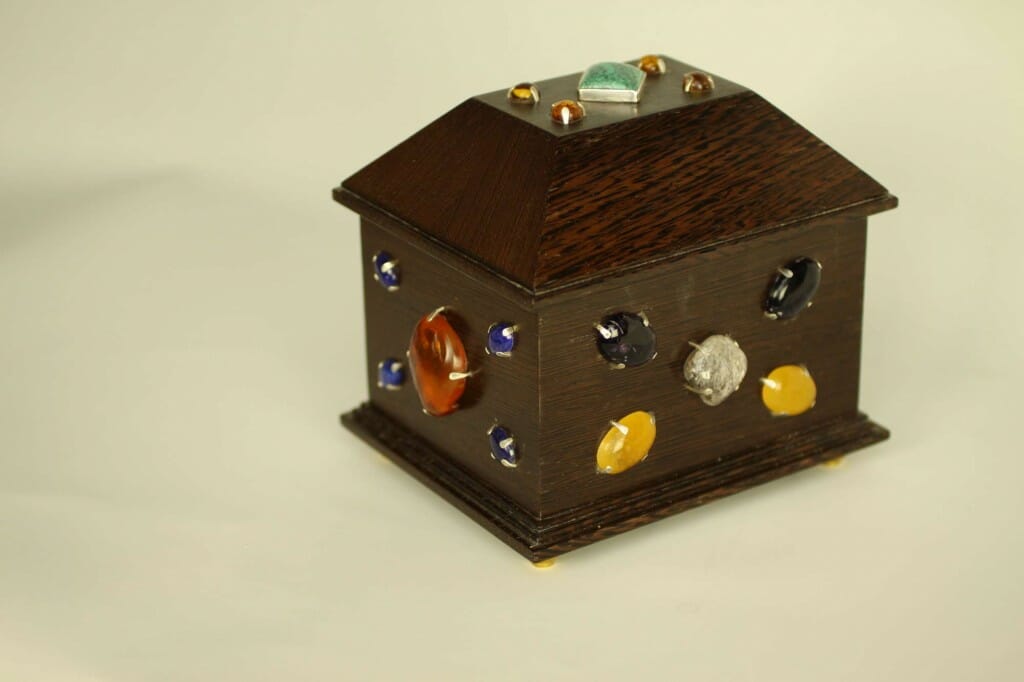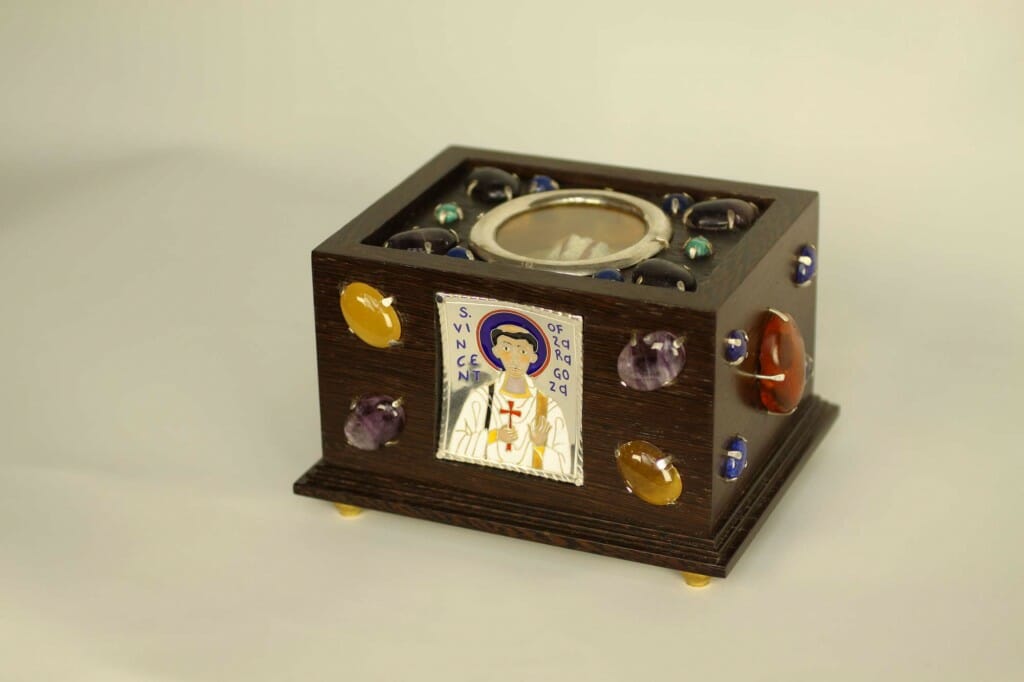Similar Posts
For many years I had wanted to design some liturgical work involving cloisonné, so I was delighted when Father Andrey Kordochkin of the Russian Orthodox Church of St Mary Magdalene approached me to make a reliquary for St Vincent of Zaragoza.
In the cloisonné technique, thin wire is laid onto plate, usually of silver or gold, enamelled in place, and then each island so formed is then filled with one colour of enamel and fired, each colour requiring its own separate firing. Christabel Anderson’s article covers the technique in more detail. Since there is no modelling within each island – one island, one colour – cloisonné lends itself to bold, graphic work. In this important respect it is unlike enamel painting where one can produce miniature paintings if so desired.
I am a firm believer that each medium is best used to do what is natural to it and not be made to imitate another, so the very limitations of cloisonné (no shaded modelling) help it to keep its distinctive simplicity. In this respect he masterpieces of medieval cloisonné are a sort of sacred cartoon, capturing the essence of things without superfluous detail.
The high amount of labour involved makes it a fairly rare medium today. Georgia has been, and remains today, a centre of high standards for the design and crafting of figurative liturgical cloisonné. Russia produces a lot of decorative church cloisonné but I have not seen much figurative work.
There was not a big budget for the Madrid reliquary, so because I was keen to include a cloisonné icon of the saint I designed the box to be made in wood rather than the more usual silver. I myself carved out the frame and recess in the silver panel in readiness for the cloisonné, and fitted the stones, but the box itself was made by Dylan Hartley, in wenge wood, and the cloisonné by Christabel Anderson.
The semi-precious and gem stones were attached to the wood using a claw system, in which silver nails were fitted tightly into predrilled holes, with glue for extra security. The flattened ends were bent over the stone. I had a jeweller make flat headed silver nails to pin the cloisonné to the box.
One word of warning: before making an icon check with the client that the wording is as they want it! I forgot to change the icon’s language from English to Latin and had to have the cloisonné re-made (the photo of the reliquary shown in this article has the first English version).
(Editor’s note. We will be posting an article by Christabel Anderson detailing the process of making the cloisonnée in a few days.)

